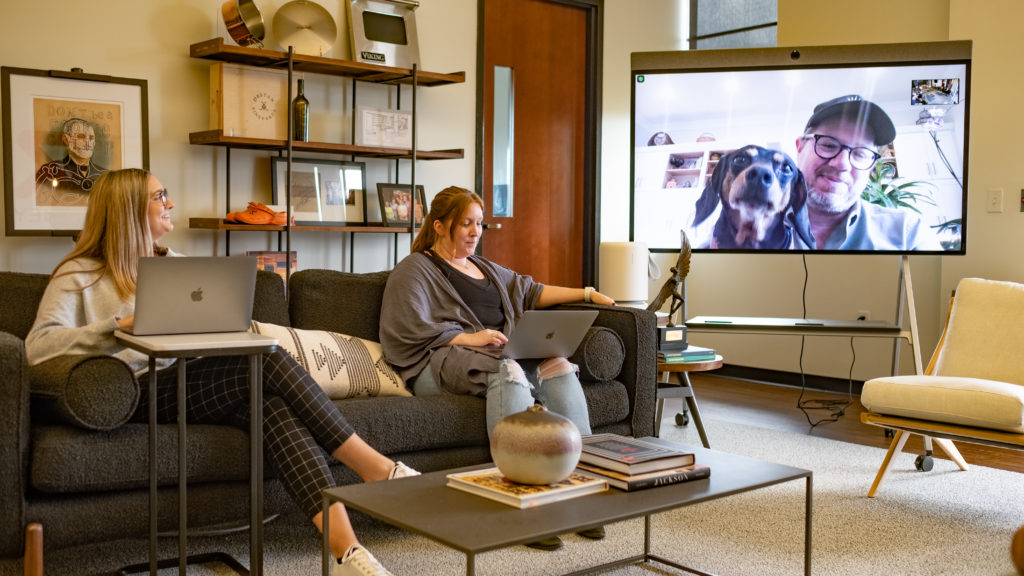I recently participated in MIT’s Mastering Design Thinking course. This three-month collaborative exercise brought together designers, engineers and entrepreneurs from around the globe.Brainstorming was a vital and ongoing part of the process in bringing ideas to fruition. As I worked together with my team members from Switzerland, India and Washington, D.C. I gained new perspectives — not only on product and service development, but on the beauty of brainstorming.
As marketing and advertising professionals, we’ve all sat through countless brainstorming sessions. Some are very productive and generate a lot of good ideas, while others veer off the rails.Here are some rules of the road to keep you on track for a productive brainstorm.
First a bit of background. Alex Osborn coined the term “brainstorm” in 1948. He said, “Using the brain to storm a creative problem – and doing so in commando fashion, with each stormer attacking the same objective.” Understandably in 1948, his mind went to a military metaphor. But the idea that you take a group of people and focus them on solving one problem is still how we do it today.
Generally, the goal is to generate as many ideas as possible, and to quote Thomas Edison, “To have a great idea, have a lot of them.” Most of the ideas will end up discarded, but they are still helping you map the route to a solution. Creativity is about making connections to things that may not seem related. That’s why brainstorming works and why any wild idea should be encouraged. And because everyone at the table has different strengths, experiences and memories, there is more likelihood of discovering that key connection that solves the problem or generates the brilliant idea.
Here are some rules of the road.
Before you even meet, give participants specific homework. Let participants know the goal or problem you want to tackle. Ask them to come into the meeting with a couple of ideas to jump-start the collaborative process. It’s important to have participants think about the problem individually first (more on that later). But we also often come up with ideas when we’re not really trying – when we’re engaged in some unrelated activity. A heads-up before the meeting will give participants time for thoughts to germinate. It also allows participants to conduct their own research. Has something similar already been done? What is the available technology or resources? What are competitors doing?
What is the ideal size for a brainstorm? This was surprising to me. The answer is four to eight participants. So, if you need to include 16 people, you could have two one-hour sessions instead of one two-hour session.
Host the meeting in a comfortable place with Post-it Notes, markers, a whiteboard, perhaps other materials if you might make physical prototypes. Caffeine and sugar actually do make a difference: they improve outcomes.
Once you begin, defer judgment. This is perhaps the biggest rule, and the one I will admit to breaking in the past. If you’re tempted to say something negative about an idea, pause and think about how you might build on that idea to improve it. Express ideas visually if possible, even if it’s with a simple drawing.
Assign a moderator, to keep everyone focused. If things are starting to slow down or the team seems stuck, there are a lot of techniques you can use to shake things up again. I like SCAMPER but you can find many others online. Depending on how complex the question is, you could also use problem decomposition to break it down into smaller chunks.

Back to why it’s important to have people work individually first: individual brainstorming will get you Quantity and Variety. Everyone is different, and everyone will bring different experiences to the problem. You can start by having everyone share those couple of ideas they had for homework with the group before they are influenced by the group.
Group brainstorming will give you Quality and Refinement. Here is where good ideas get better – or where ideas lead to other connections and ideas.
Given the last year and a half or, because you have a distributed team, you may be gathering around a virtual table. Online brainstorming can have its own benefits. It can eliminate that one person dominating the discussion. It can enable a feeling of anonymity, which can actually help fuel the process, because you want everyone to throw out wacky ideas without fear of judgment. Therefore, it also can increase the diversity of ideas. If you’re interested in this route, here are three resources worth trying: Mural, Miro and Lucid Spark.
One last bit to think about is the concept of psychological safety in teams. Basically, if people think they will be punished or ridiculed for speaking out, they won’t. This can be detrimental to a brainstorm session, where participation is crucial. It can also lead to larger consequences within a company, as Amy Edmonson explains in her Ted Talk.
Advertising and marketing are idea industries. But brainstorming can benefit any business – such as product development, solving operational issues or identifying new areas for growth. Same rules apply: set your intention, then go wild. Let us know how your next session goes.


